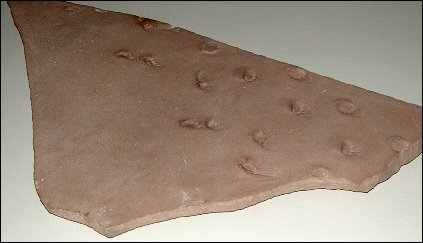

Fossils of the past are undeniably dead, so obviously we can't say anything about their behavior. After all, behavior implies doing something, and dead things tend to just lie there. Well, just because something is obvious doesn't mean it's true. We can hypothesize the behavior of extinct creatures based on various lines of evidence. One such line of evidence is the physical nature of the remains, clues as to what they were adapted for. Another line of evidence, though, is revealed through the science of paleoichnology. Not a word you come across every day, but simply put, it's the study of traces, such as tracks, of past organisms.
The tracks of animals walking or running across mud often are preserved
when the mud turns to rock. Fossil trackways of a number of organisms are known from
the northern Chihuahuan Desert, including those of dinosaurs and even of invertebrate
animals. For those who can read them, size and speed of long-gone animals can be
revealed, and sometimes, even whether they were social critters traveling in herds or
solitary wanderers.

Contributor: Arthur H. Harris, Laboratory for Environmental Biology, Centennial Museum, University of Texas at El Paso.
Desert Diary is a joint production of the Centennial Museum and KTEP National Public Radio at the University of Texas at El Paso.

Fossil footprints.